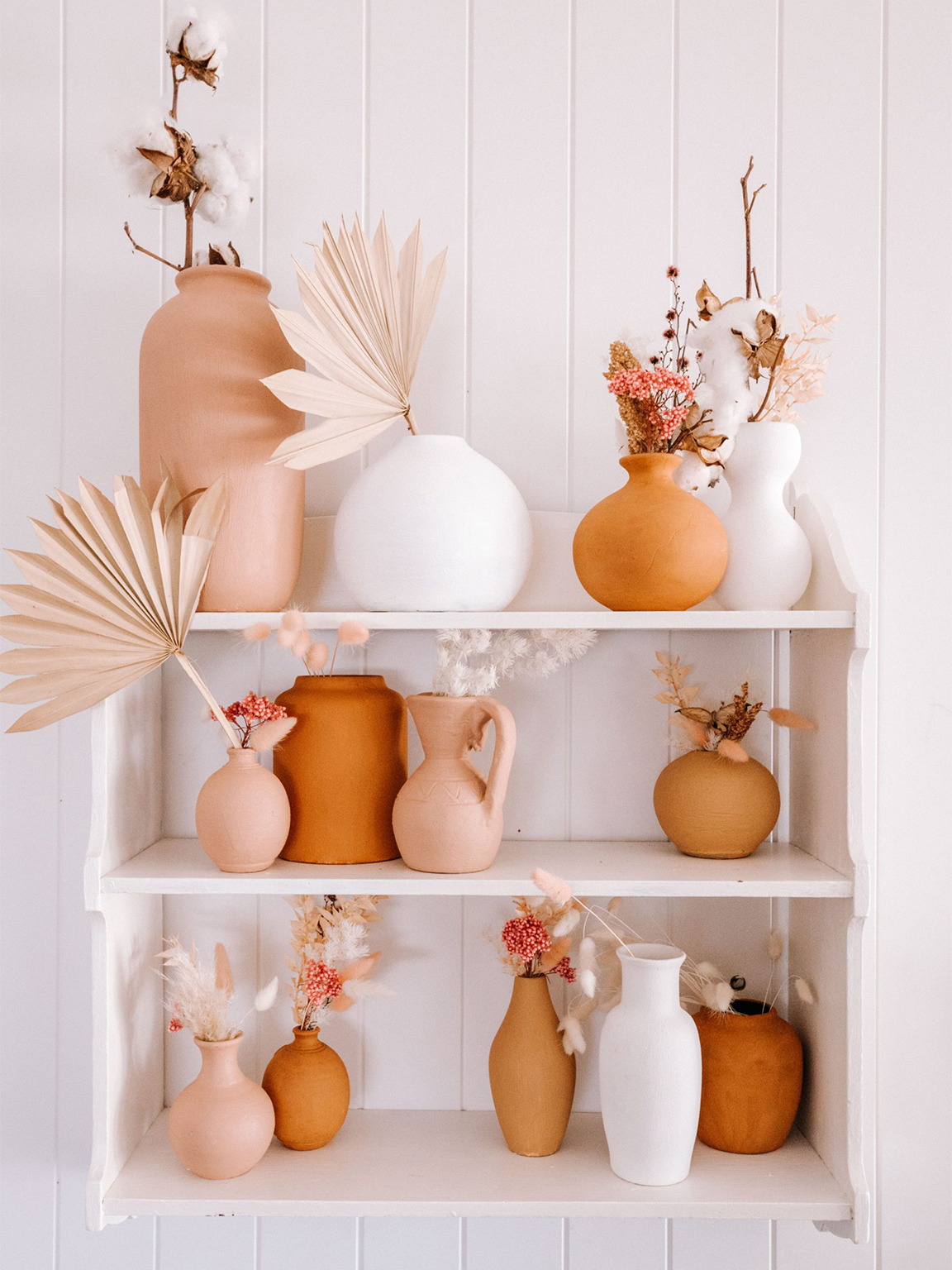We may earn revenue from the products available on this page and participate in affiliate programs.
So you want to refresh your decor. Who said you had to replace all your old belongings with new stuff? Australia-based stylist Geneva Vanderzeil, author of Home Is Where You Make It, gave her vase collection a brand-new look with just a lick of homemade chalk paint.
Vanderzeil tested out this method a few weeks ago by swathing a number of vessels in a thick liquid terracotta treatment called Megatreat (the product is similar to Rust-Oleum’s Sandstone Spray, which is sold in the U.S.). But then she got a ton of requests from followers asking for a white version—and the finished look is streamlined perfection.
Plain cement pots, antique ceramic vessels, dark-colored planters—no container is off-limits for this project. Using her own riff on chalk paint for a bespoke, handmade feel, the seasoned DIY-er upcycled her secondhand accessories. Here, she breaks down the how-to.
The Supplies
- 1 cup white wall paint
- 1 tbsp baking powder
- 1 small container
- Spoon or small stick for mixing
- Vase
- Cardboard or a drop cloth
- Brush (foam or one with bristles)
Step 1: Mix the Paint
Pour the paint (Vanderzeil used Dulux’s Vivid White, but any type will do) in a container. Add the baking powder. Using a spoon, mix the ingredients until the concoction starts to bubble and look like mousse. Thick is good in this case: You’ll be able to cover up the glossiest of surfaces.
Step 2: Prep the Vessel
Wipe your vase clean with warm water, soap, and a rag to ensure a smooth finish. Lay down a piece of cardboard or cloth to catch any splatters.
Step 3: Apply the Coats
Pick your tools depending on how much texture you want to bring out (a brush with bristles will give the end result a rougher, more organic feel, while a foam one will create a smoother facade). Start to paint the vase. Don’t worry that the first coat goes on watery and transparent. Let it dry (this takes half an hour or so), then apply another coat. Vanderzeil found that unglazed pottery requires fewer coats, but generally she recommends three or four coats for each vase. For an authentic look, make sure you paint the inside edges, especially if the vessel is a bright color. “This can be a little bit tricky but I suggest first rolling your vase onto the side and doing the inside edge first, then turn it right side up to do the rest of the vase,” says Vanderzeil.
Let it dry overnight until completely dry. Then style away with dried florals—it’s a fitting way to top off an object that’s been given a new life.
See more stories like this: This Artist DIYed a Pocket-Size Scented Pillow to Comfort Her Son This Cotton Candy Mirror Is a Spray-Foam DIY in Disguise DIY Beeswax Wrap Is a Dinner Party Game Changer





